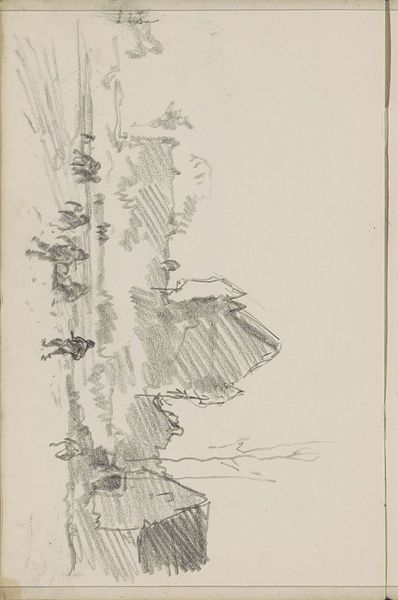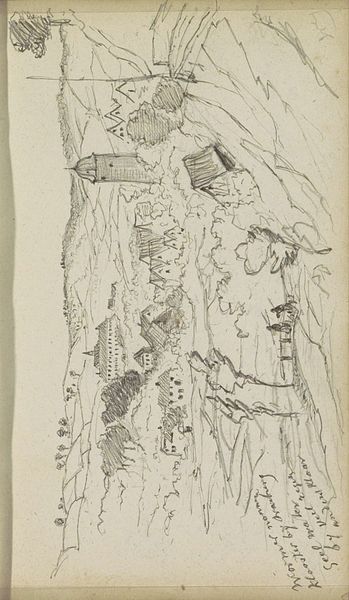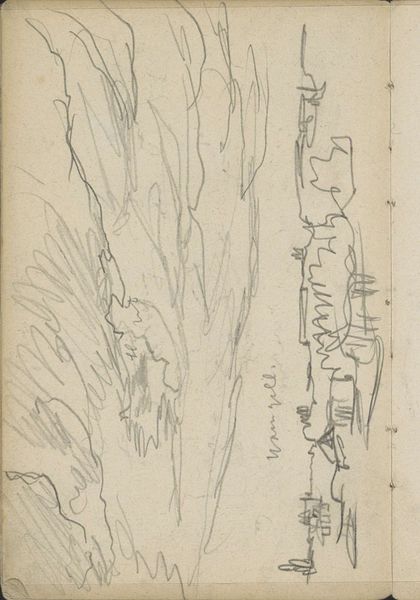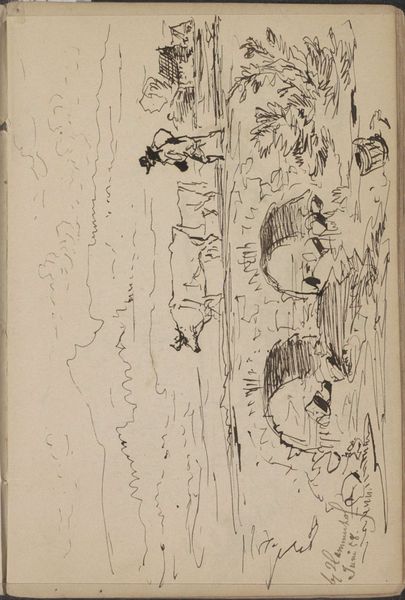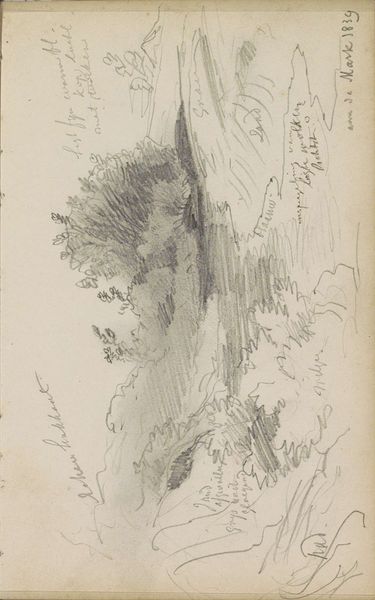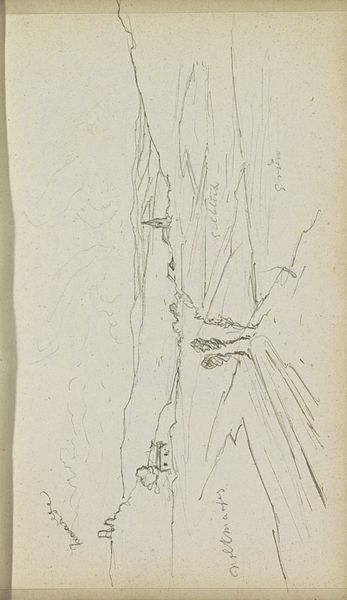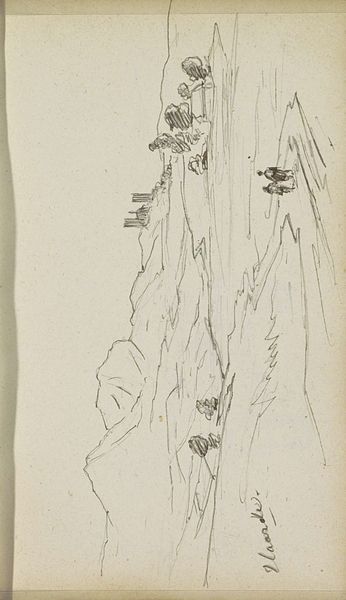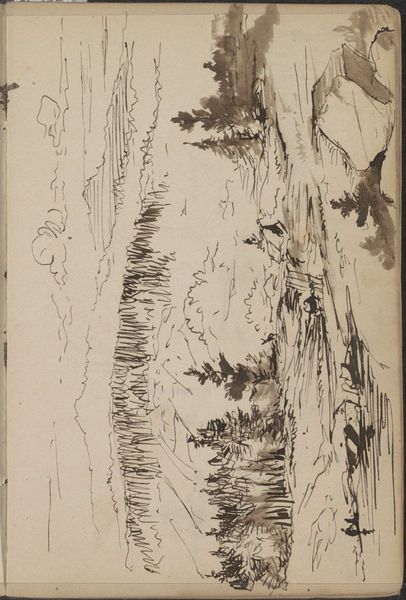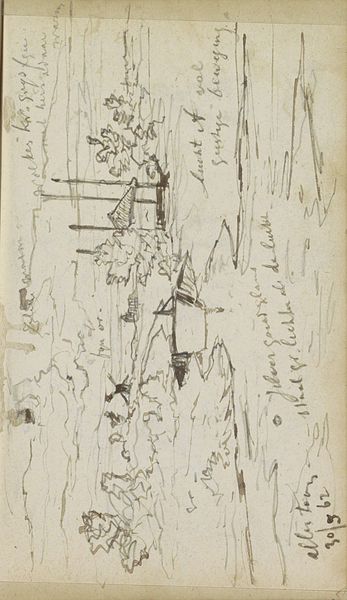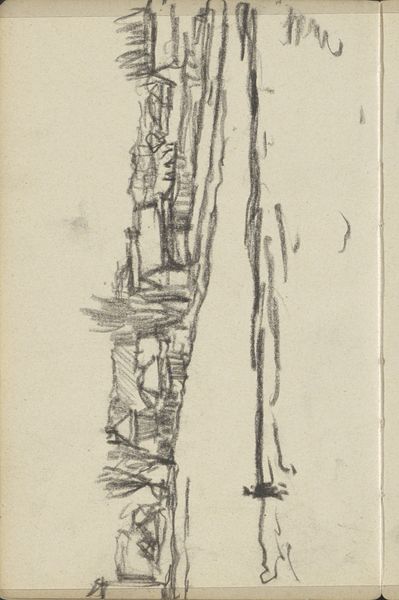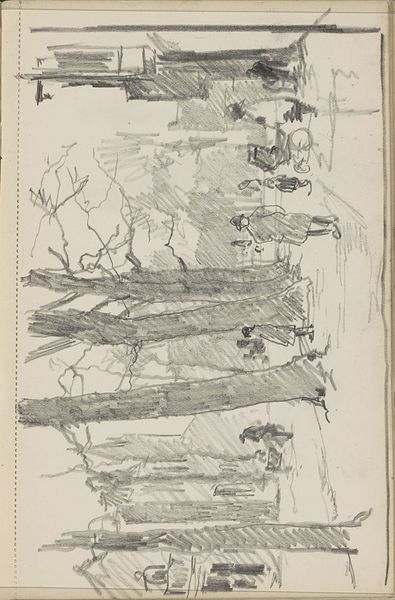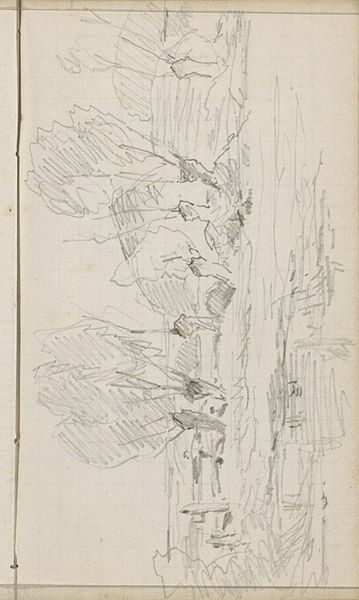
drawing, ink, pencil
#
drawing
#
ink drawing
#
pen sketch
#
landscape
#
ink
#
pencil
#
genre-painting
Copyright: Rijks Museum: Open Domain
Editor: Here we have Johannes Tavenraat’s "Landschap met figuren en grazend vee," created between 1862 and 1865, rendered in ink and pencil. It's a striking pen sketch—almost raw in its execution. What do you see in this piece, considering its form and structure? Curator: Immediately, I observe a delicate balance between foreground and background, achieved through varied line weights and densities. Note the intricate network of fine lines which define the distant trees versus the bolder, more pronounced strokes that bring the figures and livestock to the fore. The spatial relationship created becomes crucial. Do you agree that the interplay of these techniques establishes a distinct pictorial depth? Editor: I do see that. It’s interesting how he uses darker lines to create that depth, making the foreground feel closer, even though the whole thing is pretty sparse. The texture seems really important. Curator: Precisely. Furthermore, consider the significance of the artist's chosen medium: ink and pencil. The stark contrast they afford lends the work a certain dynamism, wouldn't you say? Think about how different this would look if it were an oil sketch. How does the limitation of materials inform our perception of the artist’s intent and process? Editor: That makes a lot of sense. It does give it an immediate, almost journalistic quality – like a quick study rather than a finished piece. Curator: An excellent observation. Through focused analysis of its formal elements, we gain insights into the artist's decisions and appreciate how the very nature of the medium and composition contributes to the work's overall aesthetic impact. Editor: I never thought about how much the choice of ink and pencil impacted the feeling of the piece! Curator: It is precisely by attending to such nuances that the essence of artistic expression reveals itself.
Comments
No comments
Be the first to comment and join the conversation on the ultimate creative platform.
